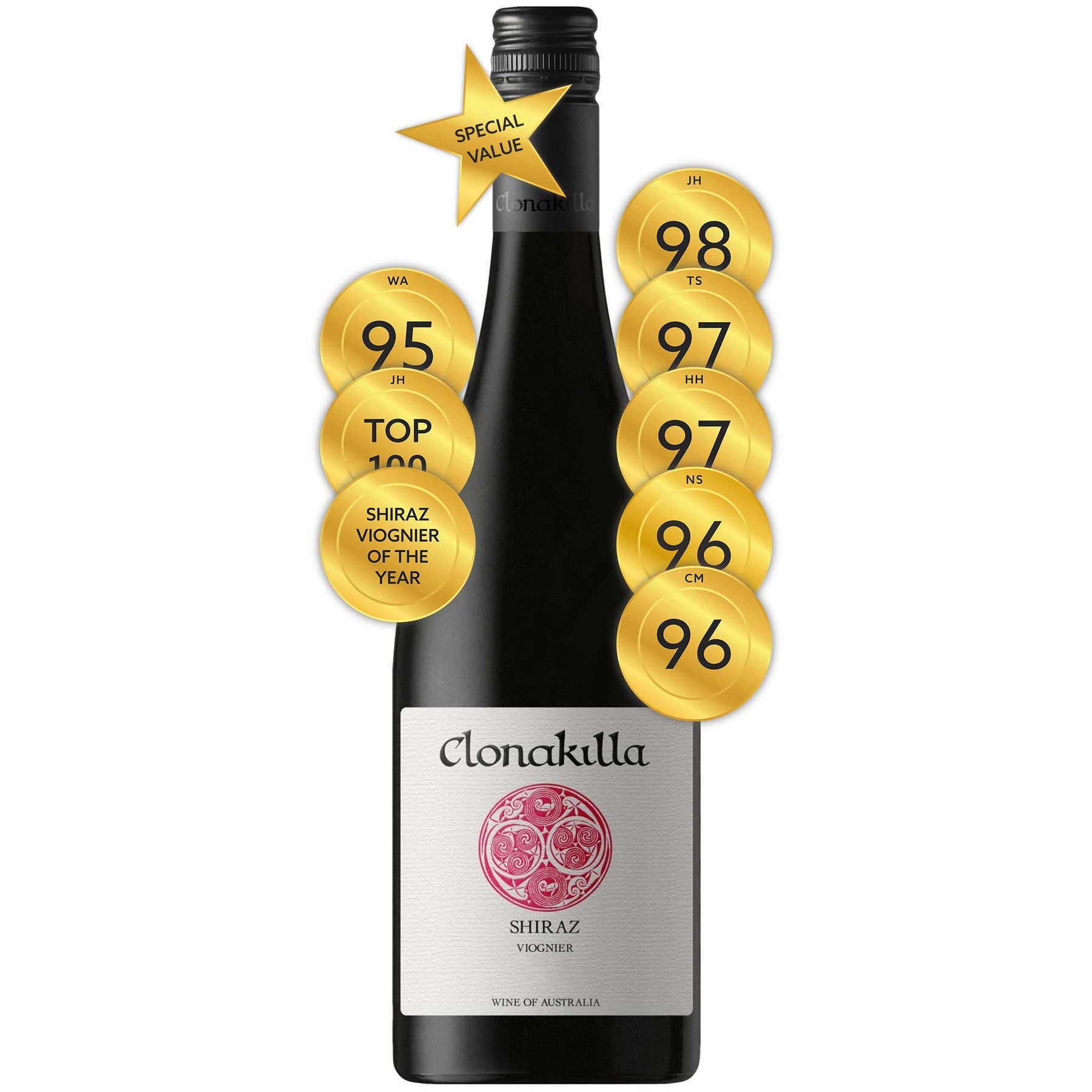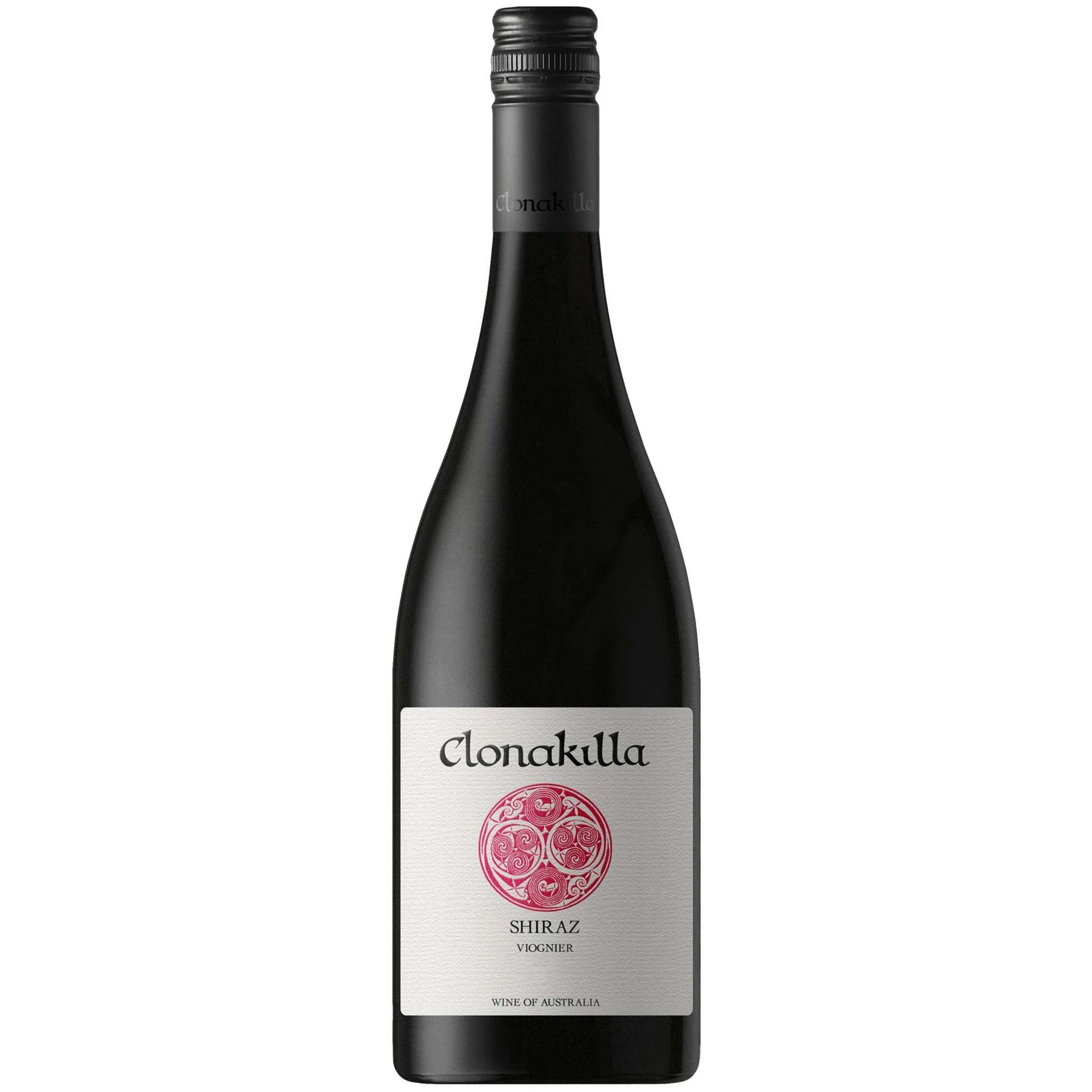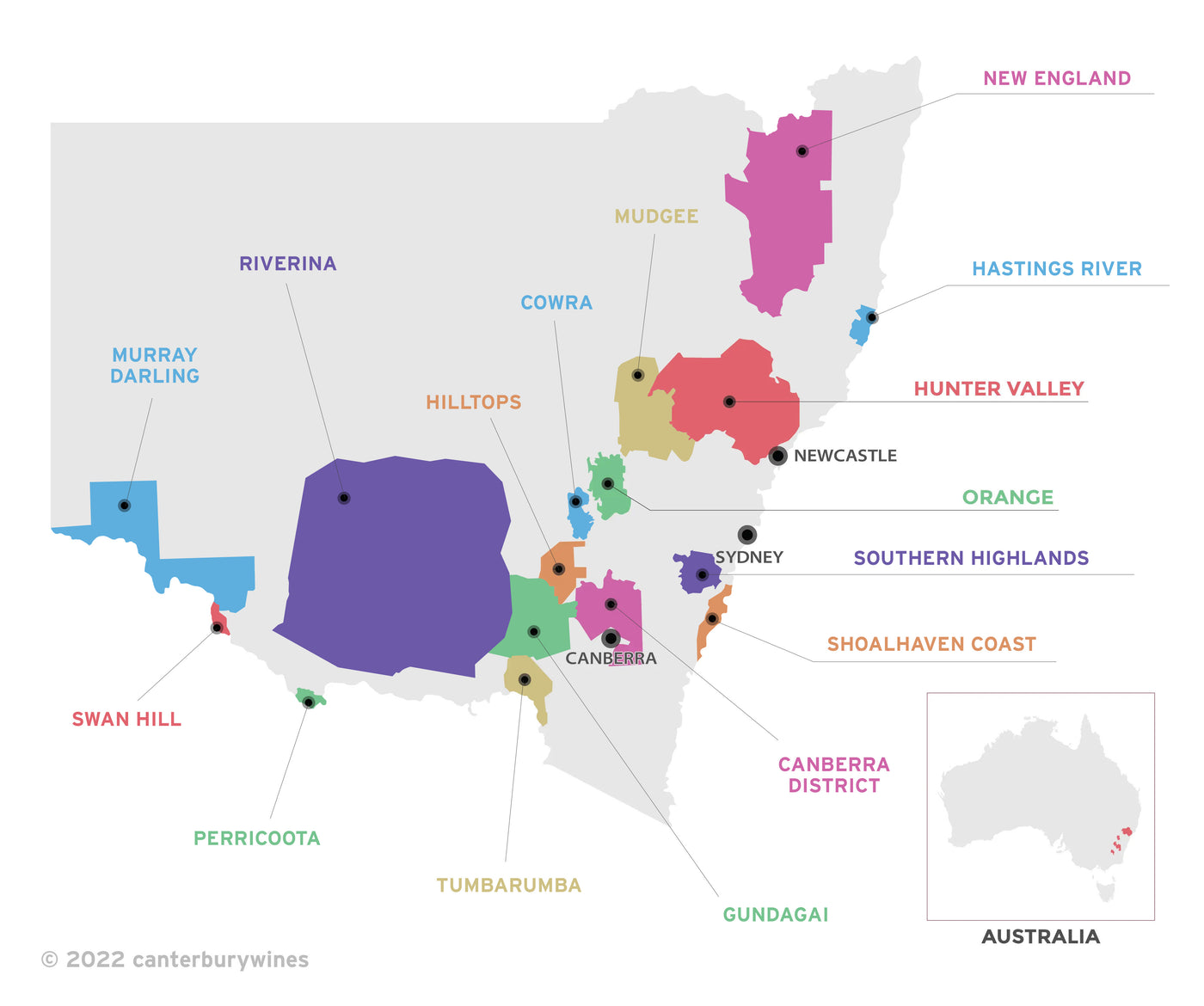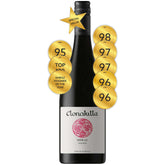

Clonakilla Shiraz Viognier 2016
Style: Red Wine
Closure: Screwcap
Clonakilla Shiraz Viognier 2016
Warehouse
34 Redland Drive
Vermont VIC 3133
Australia
Critic Score: 98
Alcohol: 14.0%
Size: 750 ml
Drink by: 2040
Halliday Wine Companion Best Shiraz Viognier of the Year 2019
James Halliday Top 100 Wines of 2017
"It is one of our four greatest reds, alongside Penfold’s Grange, Henschke’s Hill of Grace and Cullen’s Diana Madeline Cabernet Sauvignon." Ken Gargett
Established in 1971, Clonakilla is a small family winery at Murrumbateman dedicated to producing distinctive, handcrafted Canberra region wines. The Clonakilla Shiraz Viognier, their flagship wine, draws its inspiration from the great wines of Côte-Rôtie and is a masterclass in cool-climate winemaking. It has won numerous awards and has been regularly nominated as Wine of the Year by Australia's leading Wine Critics. It is one of the great wines of Australia and is recognised as a world-class red in its own right.
"This is a shiraz viognier of the highest order with desperate purity of white pepper, whole bunch mixed spice and plum skin, and a super fine, gravelly tannin structure of breathtaking presence, yet unerring finesse. In enduring line, undeviating persistence and sheer, glorious beauty, this vintage sits confidently among the greatest syrahs on earth." Tyson Stelzer

Winemaker Tim Kirk discusses the 2016 Shiraz Viognier
Expert reviews
"I remember the heady days when the Shiraz Viognier craze kicked off. Some were good. Some were 'Shiraz with training-wheels' and overtly floral. A few were excellent. But one always stood head and shoulders above the rest and continues to be a benchmark to this day: Clonakilla’s Shiraz Viognier.
The epic 2015 release was a hard act to follow but they have backed it up with a jaw-droppingly beautiful wine. It is a pure dark and red fruit canvas dotted with hints of game, spice, herbs and violet. Supple and silky on the palate with great detail and poise, a gentle cascade of fine tannin provides support for the cellar.
I imagine a day when I sit surrounded by wide-eyed grandkids regaling them of tales of how I was around during the Great Shiraz Viognier Wars and there was only one winner — Clonakilla. It’s a beauty." Dave Brookes, The Adelaide Review
"The perfumed, spicy bouquet with red flowers and fruits doesn't prepare you for the intensity and piercing length of its beautifully balanced medium-bodied palate. This is a truly glorious wine that draws you back again and again to explore the wealth of red fruit flavours, and the majesty of its texture and structure. Drink by 2041." James Halliday, Halliday Wine Companion - 98 points and Top 100 Wines of 2017 and Best Shiraz Viognier of the Year 2019 and Special Value Wine ★
"This is a shiraz viognier of the highest order with desperate purity of white pepper, whole bunch mixed spice and plum skin, and a super fine, gravelly tannin structure of breathtaking presence, yet unerring finesse. In enduring line, undeviating persistence and sheer, glorious beauty, this vintage sits confidently among the greatest syrahs on earth." Tyson Stelzer - 97 points
"Medium to deep red colour with a good rim of purple, the bouquet is fresh and pepper/spicy with a decidedly foresty whole-bunch nuance. A lovely complex bouquet, which will only get moreso with time. The palate fllows on from the nose precisely, with intense spice and berry flavours, a hint of violets and some floral nuances. A perfumed, high-toned, supremely elegant red wine. Drink: 2020-2038." Huon Hooke, The Real Review - 97 points
"The three most important – for want of a better word – pillars of Australian shiraz are arguably Penfolds Grange, Henschke Hill of Grace and Clonakilla Shiraz Viognier, with apologies to Tyrrell’s and Mount Pleasant, among others. Given the extraordinary run of quality of Clonakilla Shiraz Viognier over the past (nearly) 20 years it made me wonder, as I consumed a glass or two of this soon-to-be-released 2016, just how far Clonakilla is likely to reach into the mainstream Australian psyche. Will Clonakilla SV ever reach Hill of Grace status in mainstream fame terms? On quality, it should do so. On style, I suspect not. It’s just not big and obvious enough.
Clonakilla Shiraz Viognier has lost none of its charm or power over the years, but it has become a lighter, more elegant and more finely drawn wine. The subtle change is clearly evident with this 2016. For a long time we’ve played with the term Burgundian Shiraz, especially in relation to Clonakilla, but the phrase is becoming increasingly apt. This wine is light on its feet, perfumed, exotic, marshalled with fruit and spice, and tannic. It doesn’t wallop you upfront; it saves itself for the finish. It’s not an impetuous wine. There are candied notes here, dry spices, woody anise, a whisper of peppercorn. I would almost describe this wine as crisp, such is its lack of gloop, its finesse, its cleansing run of flavour-infused acidity. This release will age magnificently. Drink: 2018-2036+". Campbell Mattinson, The Wine Front - 96 points
"The detailed layering in this wine is superb, as is the measured expression of exuberant fruit. Aromas of baking spices, pepper and bright red berry and cherry fruits make for enticing youthful appeal. The palate has an incredibly silky and elegant appeal. Bright red cherry and plum fruits. Drink now to 2030. Screw cap." Nick Stock, JamesSuckling.com - 96 points
"The newest release, the 2016 Shiraz-Viognier displays trademark florals, spices and red fruit. It's voluminous without being weighty, fruity and savory, with licorice, pepper and meaty notes on the long, silky finish. Fans of the style will want to grab extra bottles of this one, as it should drink well for up to two decades. Drink: 2018 - 2035." Joe Czerwinski, Wine Advocate - 95 points
Awards
Halliday Wine Companion Best Shiraz Viognier of the Year 2019
James Halliday Top 100 Wines of 2017
Special Value Wine - Halliday Wine Companion ★
About the winemaker

"As humans go, Tim Kirk is a good one; he is courteous and respectful, is generous with his time and when you talk to him, he genuinely listens. That, and he also makes very, very good wine. On a personal level, he is deeply spiritual. He doesn't hide his faith but is far from preachy. It's a pure, inclusive belief and he radiates a quiet, confident and contented joy. He's like a six-foot scholarly Friar Tuck who, instead of mead, makes Australia's best Shiraz Viognier." Wine Selectors
In 1991 Tim Kirk travelled to the Rhône Valley where he tasted the great Shiraz-based wines of Côte-Rôtie and Hermitage. The highlight of the trip was at the Guigal family winery, where Tim tasted the 1988 single vineyard Côte-Rôties La Landonne, La Mouline and La Turque from barrel.
This was a turning point. Tim remembers it well: "There are rare moments in a wine lover's life when you find yourself transfixed by the extraordinary beauty of what's in the glass before you, and tasting those Cote Roties was just such a revelatory moment for me. They had striking aromas; an ethereal perfume with complex, savoury dimensions, while the palate structure was different to the robust texture that Australian Shiraz wines are renowned for. These wines were finer in texture, the tannins leaving a silky impression, but with flavours that had persistence and great drive. I thought at the time that if I was ever able to produce wine from our humble vineyard at Murrumbateman that got close to that level of complexity, refinement and beauty, I would be a very happy man. I wondered if Shiraz wines approaching the best Cote Roties in style and substance could be produced in Australia. I was very fortunate that my father John had planted some Viognier at Clonakilla in the mid-eighties. I had also been impressed with what Bailey Carrodus had achieved at Yarra Yering in the Yarra Valley with his Dry Red No. 2. So from the 1992 vintage onwards we set about making a Shiraz Viognier blend from our Murrumbateman vineyard."
Tim's trip to the Rhône Valley was a career defining trip. A year later the first Clonakilla Shiraz with a small amount of co-fermented Viognier was made and received critical acclaim from a number of luminaries. Tim decided to leave his teaching post at a Jesuit school and became the winemaker and General Manager at Clonakilla.
In 1999, in a shock result for the Hunter Valley dominated NSW wine industry, the 1998 Clonakilla Shiraz Viognier was named New South Wales Wine of the Year. Numerous awards have since followed and the wine has regularly been nominated as Wine of the Year by Australia's leading Wine Critics. The Clonakilla Shiraz Viognier is now widely celebrated as one of the great reds of Australia and recognised as a world-class red in its own right.
In 2007, encouraged by the worldwide success of the Shiraz Viognier, Tim decided to release a straight Shiraz from the 2006 vintage (from the same estate vines that produce the Shiraz Viognier). The Syrah presents as a darker, more brooding wine than the Shiraz Viognier with a distinct wild berry, potent spice character. This is the Hermitage to the Shiraz Viognier's Côte-Rôtie. It's also rare. No more than 300 dozen are made each year.
In 2009 Tim Kirk was named Winemaker of the Year by Nick Stock in the Penguin Good Wine Guide. This was followed in 2013 when he was named Gourmet Traveller Wine magazine's Winemaker of the Year. It was the third time he had been shortlisted for this prestigious award.
The overriding principle that governs the work at Clonakilla is that the winemaking has to respect the fruit. In Tim's view, "The task of the winemaker is to capture something that is present in the fruit; something good, unique, worthy of inspection, perhaps even beautiful. Carefully grown grapes from a noble site deserve the opportunity to express themselves in as pure a form as possible. It is important to resist the temptation to bury the fruit in too much winemaking artifice. The winemaking inputs we bring should serve the purpose of capturing the personality of the fruit, rather than imposing the winemaker's vision for what the thing is supposed to taste like."
About the winery

In 1971 John Kirk purchased an 18ha farm near the village of Murrumbateman, 40km north of Canberra. He named the property Clonakilla ('meadow of the church') after his grandfather's farm in County Clare, Ireland. The Vineyard was established the same year, on soil consisting of sandy clay loams over a base of decomposed granite. John produced the Canberra District's first commercial vintage in 1976 – a Riesling Sauvignon Blanc and a Cabernet Shiraz. From 1978 to the present, the Clonakilla Vineyard has gradually expanded with Shiraz, Riesling and Viognier making up the bulk of the vineyard, which now covers 16.2ha.
John first planted Shiraz at Clonakilla in 1972. Through the seventies and eighties the Shiraz was blended with Cabernet Sauvignon in traditional Australian style. In 1990 it was decided to keep the Shiraz component separate. The Clonakilla 1990 Shiraz went on to win two gold medals and two trophies. James Halliday described it as "a tour de force in spicy/peppery varietal character”. Needless to say, the Kirks began to see Murrumbateman Shiraz in a new light.
In 1991 Tim Kirk, John's son, made a career defining trip to the Côte-Rôtie in the Rhone Valley and the idea of a Clonakilla Shiraz Viognier blend was born. A year later the first Clonakilla Shiraz with a small amount of co-fermented Viognier was made and received critical acclaim from a number of luminaries. Tim decided to leave his teaching post at a Jesuit school and became the winemaker and General Manager at Clonakilla.
Demand for their wines soon outstripped supply and in 1998 Tim and his wife Lara Kirk purchased the 20ha block next to Clonakilla and planted Shiraz and Viognier on the warm North East facing site. In 2007 the Kirk family purchased another adjoining property and planted another 1.8ha of shiraz, plus 0.4ha of grenache, mourvèdre and cinsault.
Meanwhile, the range of wines at Clonakilla gradually expanded. In 2000, the first Clonakilla Hilltops Shiraz was made from grapes grown around the Town of Young in New South Wales. In 2007 the first Clonakilla O'Riada Shiraz, from fruit purchased from other Canberra vineyards, was made in response to the loss of 90% of the estate fruit to frost. In subsequent years the O'Riada Shira also included the estate fruit that just misses the cut for selection in the Shiraz Viognier.
In the same year, encouraged by the worldwide success of the Shiraz Viognier, Tim decided to release a straight Shiraz (Syrah) from the same estate vines that produce the Shiraz Viognier. The Syrah presents as a darker, more brooding wine than the Shiraz Viognier with a distinct wild berry, potent spice character. This is the Hermitage to the Shiraz Viognier's Côte-Rôtie. It's also rare. No more than 300 dozen are made each year.
It has been a remarkable journey for Clonakilla. When John Kirk planted the first vines in 1971 he had no idea that his vineyard would one day be celebrated as one of the best in the country. Over time something important has become clear - Murrumbateman and Shiraz (in the right hands) are one of those rare combinations in the world of wine that can produce something truly exciting.

New South Wales
New South Wales is home to more than 500 wineries across 16 wine regions that produce a range of extremely diverse wines. The regions are Canberra District, Cowra, Gundagai, Hastings River, Hilltops, Hunter Valley, Mudgee, Murray Darling, New England, Orange, Perricoota, Riverina, Southern Highlands, Shoalhaven Coast, Swan Hill and Tumbarumba.
Hunter Valley is New South Wales' best known wine region and has long stolen much of the spotlight . It is also Australia’s oldest continuous wine region - the first vineyard at Wyndham Estate was established in 1828 using cuttings supplied by viticulturist James Busby, widely considered the father of Australian wine. Semillon is perhaps the most iconic wine of the Hunter Valley and is among the greatest and most distinctive wines of Australia - if not the world.
New South Wales' wine regions have a wide range of microclimates. The Great Dividing Range has a substantial influence on the climate of many of the viticultural areas. The regions of higher elevation, such as Canberra District, Canberra District, Orange and Tumbarumba have cooler climates with more continental influences. These regions are responsible for some of the State's most enticing chardonnay, shiraz, cabernet sauvignon, riesling and sauvignon blanc. They, together with the Hunter Valley, which by contrast, is very warm, with high humidity and a large amount of rainfall during the growing and harvest season, produce the bulk of the high quality wine in New South Wales.

